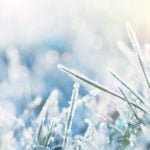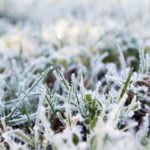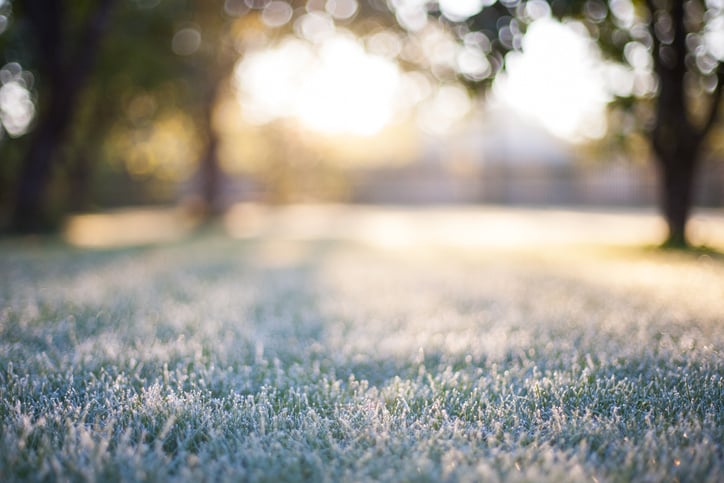Lawn frost damage is nothing to take lightly. Although your grass may be well on its way to winter dormancy when frost occurs, it may not be protected. Frost damage on your lawn is one of the major downsides of a cold autumn or winter morning.
Frosted grass may not seem to be a critical part of your lawn care routine, but it should be. Frozen grass may look pretty, but one wrong move can cause significant damage.
So, let’s take a look at some of the things you should consider to prevent damage to your lawn, the next time it’s covered in frost.
How Does Frost Develop?
You don’t need extremely cold weather for frost to develop.
Frost forms on clear, cold nights when the air becomes warmer than the grass, trees, and cars. In essence, the ground temperature is colder than the surrounding air. Frost will only form on a surface with a temperature that is at or below freezing. When the temperatures near the ground fall below 32 degrees, the condensation or dew freezes and transforms to frost.
When this happens, it’s considered to be a light frost because the ground isn’t frozen yet, and grass can still grow at this time. A heavy frost (also known as a hard frost) can kill flower beds and bring on winter dormancy in plants. That’s because the ground is frozen.
How Law Frost Damage Occurs
The ice inside and outside of the grass becomes microscopic daggers. Walking on the grass can cause those daggers to further damage the grass blades. This can cause significant cellular damage.
And if the temperature drops below freezing several nights in a row, it will take even longer for your lawn to recover.
How To Look For Damage
If you suspect your lawn is suffering from freeze injury, look closely at your leaf blades. If you notice the old leaf blades are burned and discolored from the leaf tip down about an inch, you have lawn frost damage.
But the good news is that if you see that the newly emerging leaf tissue looks healthy, you’ll be fine. As soon as you mow you’ll remove the damaged tissue and your turf will look great.
Thankfully, your grass can withstand some frost damage above ground level. That’s because the roots get a chance to heal the damage as grass warms and grows. Some lawns that experience lawn damage will even go dormant until warmer temperatures return.
How To Minimize Lawn Frost Damage
If your lawn does freeze and you need to walk on it or mow it, consider waiting until the sun is high enough to melt the frost. To speed up the process, you can use a sprinkler to melt the frost with warmer water. That’s what turfgrass managers do at golf courses. 
Or, give your grass a deep watering the night before an expected frost. The watering allows moisture to slowly evaporate overnight. This causes friction and heat around the grass blades. As the night air drops below freezing, your turf will have a slightly higher temperature from the evaporating heat process, which keeps your lawn from reaching the freezing temperature that causes plant cell wall damage.
Let Lush Lawn Help
If you’re experiencing lawn frost damage, Lush Lawn can help you to get it to recover faster. Our lawn care treatments can handle all common lawn diseases and damage.
Remember, Not all lawn diseases flourish in warm weather. Some progress under the extremely low temperatures in Michigan. To get a free estimate for your yard, contact Lush Lawn today.
